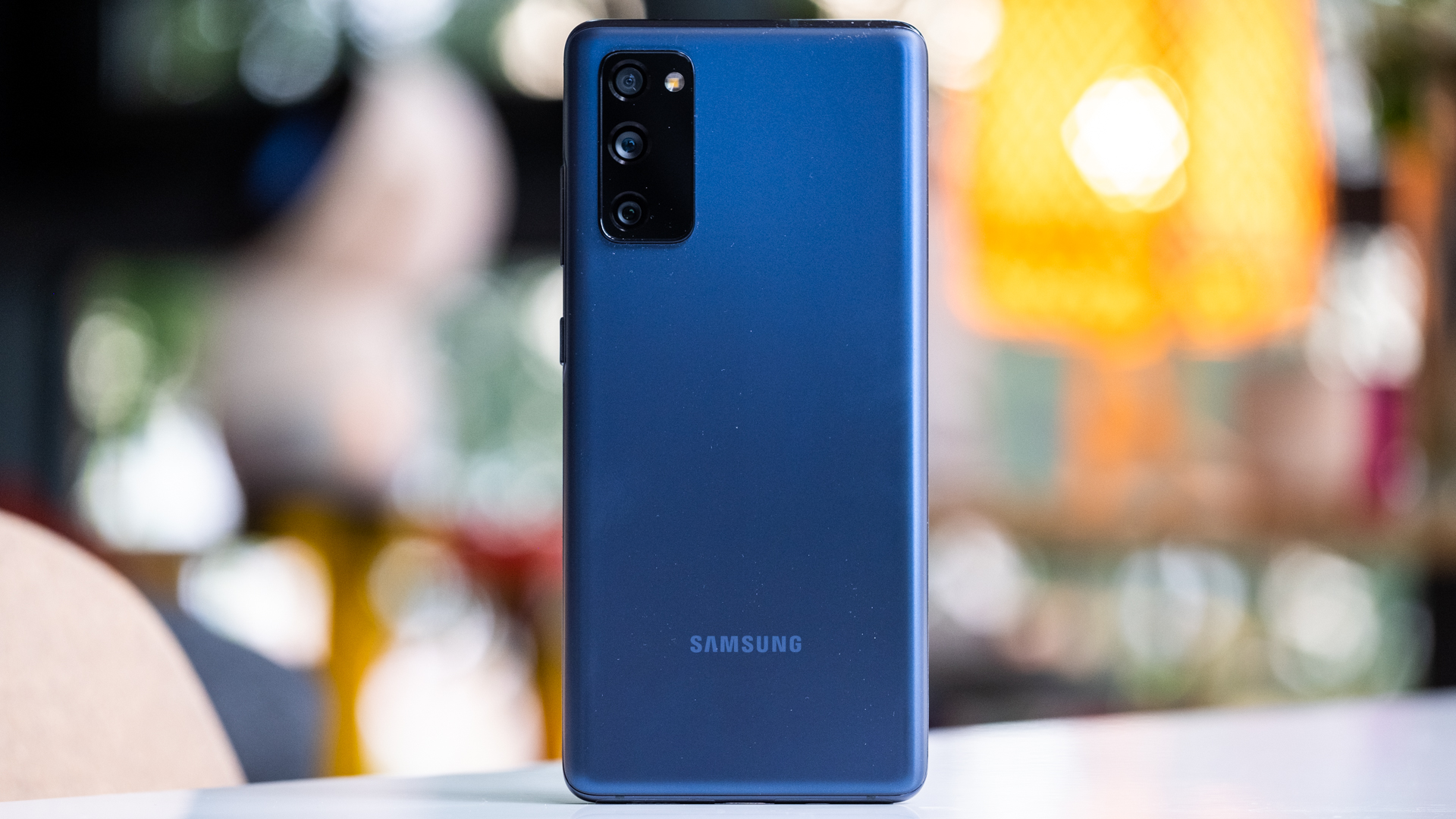Affiliate links on Android Authority may earn us a commission. Learn more.
Samsung Galaxy S20 FE one year later: Is it still worth buying?
Published onDecember 4, 2021
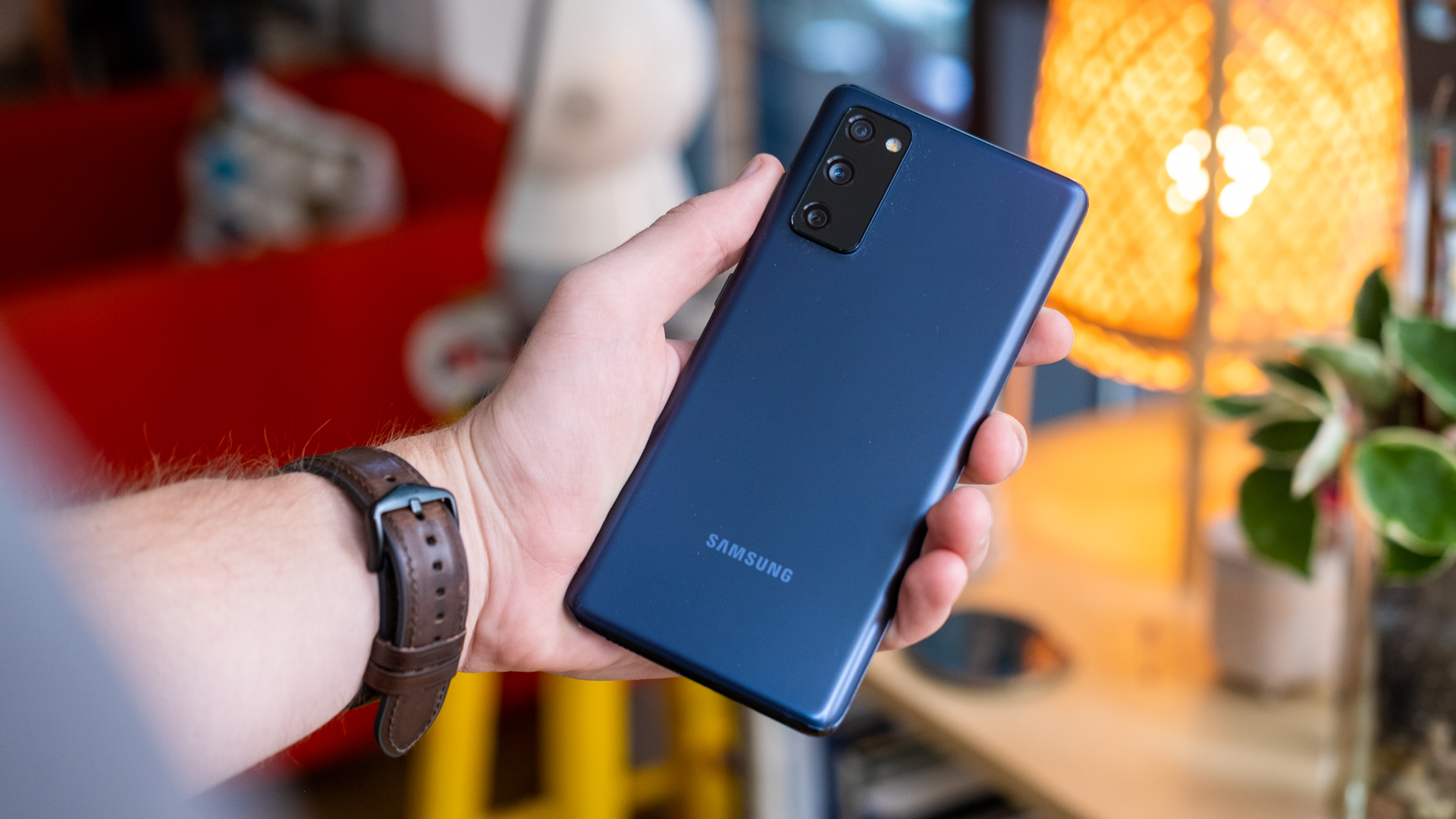
The Samsung Galaxy S20 FE (Fan Edition) was a standout release for the company in 2020, managing to deliver a great combination of attractive pricing and a well-rounded spec sheet. In fact, we gave it our Editor’s Choice award for the best Android smartphone of 2020.
It kind of boggles the mind that the Galaxy S20 FE still hasn’t been succeeded by the Galaxy S21 FE just yet given its popularity with buyers and critics — although the global chip shortage is understandably to blame. Ahead of the belated potential launch of its successor, how does Galaxy S20 FE fare after a year? Should you still pick it up or should you wait for the company’s 2022 offerings? That’s what we’re going to find out in this Samsung Galaxy S20 FE long-term review.
Samsung Galaxy S20 FE review recap
As a refresher, you can check out our original Galaxy S20 FE review for our thoughts on the device at the time. You can also view our original hands-on video above for more details.
How has the hardware aged since last year?
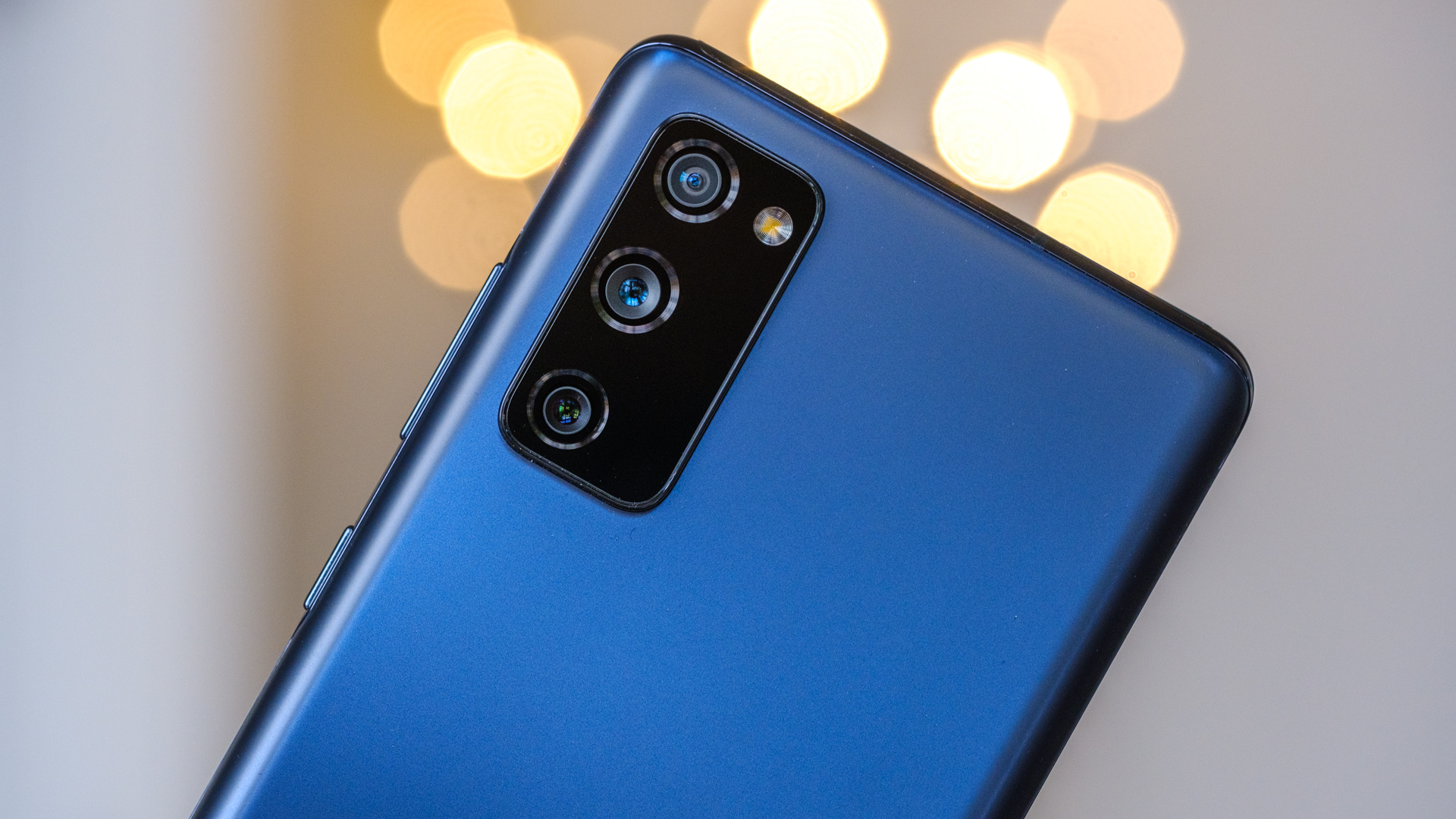
The Galaxy S20 FE still holds up relatively well when you look at the specs sheet. There’s 6GB to 8GB of RAM, 128GB to 256GB of storage, an FHD+ 120Hz OLED screen, and a 4,500mAh battery with 25W charging.
Samsung’s phone also packs IP68 water/dust resistance and wireless charging, ticking two extra boxes for flagship phones in 2021. It even has two features missing from most of the company’s 2021 flagships in the Galaxy S21 series, namely microSD expansion and a bundled charger (albeit 15W).
The processor you get will depend on your region and when you purchase the phone. The Galaxy S20 FE 5G in the US is essentially identical to the Galaxy S20 FE regular, but with the titular 5G support and the Snapdragon 865 chipset. The 4G model initially launched with an Exynos 990 chip (Samsung provided this model for this long-term review), but has since been replaced in many regions by the 4G-only Snapdragon 865-toting variant. Look out for the “SM-G780G” model number if you want the latter chipset.
Check out: The best Samsung phones
The Exynos 990 variant isn’t as powerful as the Snapdragon 865 model when it comes to GPU-related tasks. In saying so, the fundamental experience was still very smooth in my testing. Swiping between home screens, using the camera, launching apps, and scrolling were all suitably fluid. 3D gaming was also handled pretty well, with the likes of Call of Duty Mobile and Nascar Heat Mobile running at a great clip. We also tried Genshin Impact and while it wasn’t the smoothest experience (swiping the camera around resulted in some noticeable judder), it’s still very playable. Emulators are another story though, as advanced titles in Dolphin (e.g. F-Zero GX and Metroid Prime) were slow-motion affairs. Those who value a smooth gaming experience across the board should keep an eye out for the Snapdragon version instead.
The Galaxy S20 FE's specs still hold up relatively well against today's affordable flagship fare.
I was quite happy with battery life on the S20 FE as well. I was able to get over seven hours of screen-on time with a relatively heavy day of YouTube viewing, but you’ll definitely want to plug in your phone come bedtime with usage like this. Less intensive usage, such as messaging and music streaming, along with setting the screen to 60Hz, should certainly net you a day and a half to two days of usage.
An unexpected test of endurance came a few days into the review period when the power went out from 9AM until just before 3PM. I was able to use the phone as a hotspot for my laptop for a few hours, but the computer wasn’t going to last for this entire time frame. So I connected my wireless keyboard to my phone and was able to work for almost an hour and a half while streaming YouTube Music tracks at the same time (I don’t recommend working like this, by the way). Once the power came back on, I still had just under 40% juice left. Not bad at all.
If it ain’t broke, don’t fix it
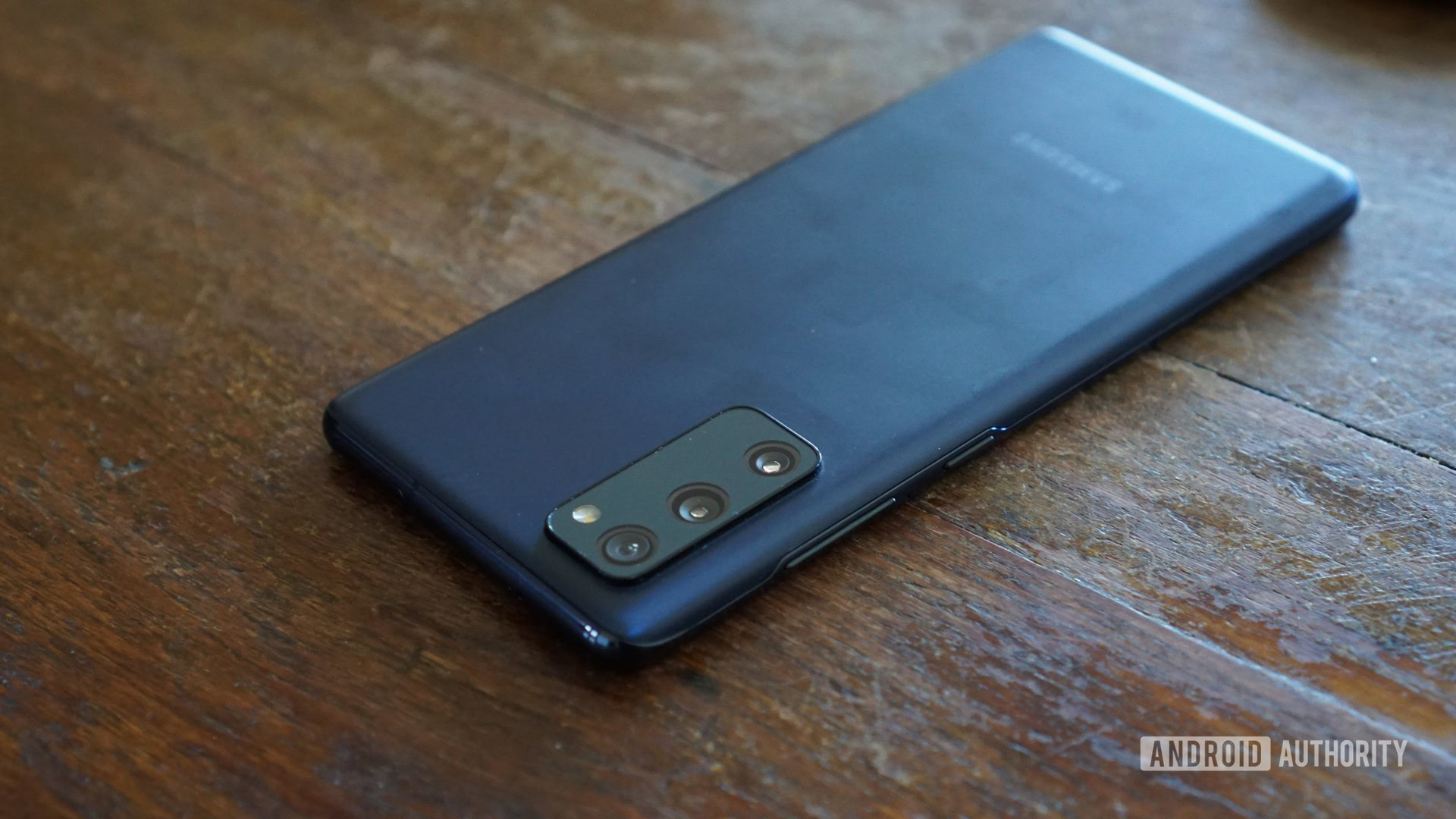
One of the most notable Galaxy S20 FE cutbacks compared to its more expensive stablemates in the Galaxy S20 range was the move to a plastic rear cover instead of glass. But if anything, the phone’s design and choice of rear cover still make for a premium experience when you’ve got it in your hands.
You can tell that the “glasstic” rear cover is plastic after a few moments with the phone, but the finish still nevertheless feels better than typical plastic designs. Personally, I feel more comfortable with a plastic rear back like this than a glass back when it comes to durability. This particular review unit had a slight ding at the top when I received it. I have no doubt this would’ve been a larger, more noticeable spiderweb crack if the device had a glass back instead.
The rest of the phone’s design is pretty solid too, with a sturdy metal frame ringing the device and a flat-edged screen that’s a welcome change from the curved panels seen on so many phones today. Speaking of that screen, it’s not QHD+, but the FHD+ resolution is sharp enough and I had no problem viewing the screen in sunlight.
The Galaxy S20 FE is perfectly manageable with one hand too, owing to its relatively lightweight build and smaller size, especially compared to the likes of the Galaxy Note 20 Ultra. Those looking for a more ergonomic flagship should keep an eye on this one even a year on.
What about the camera experience?
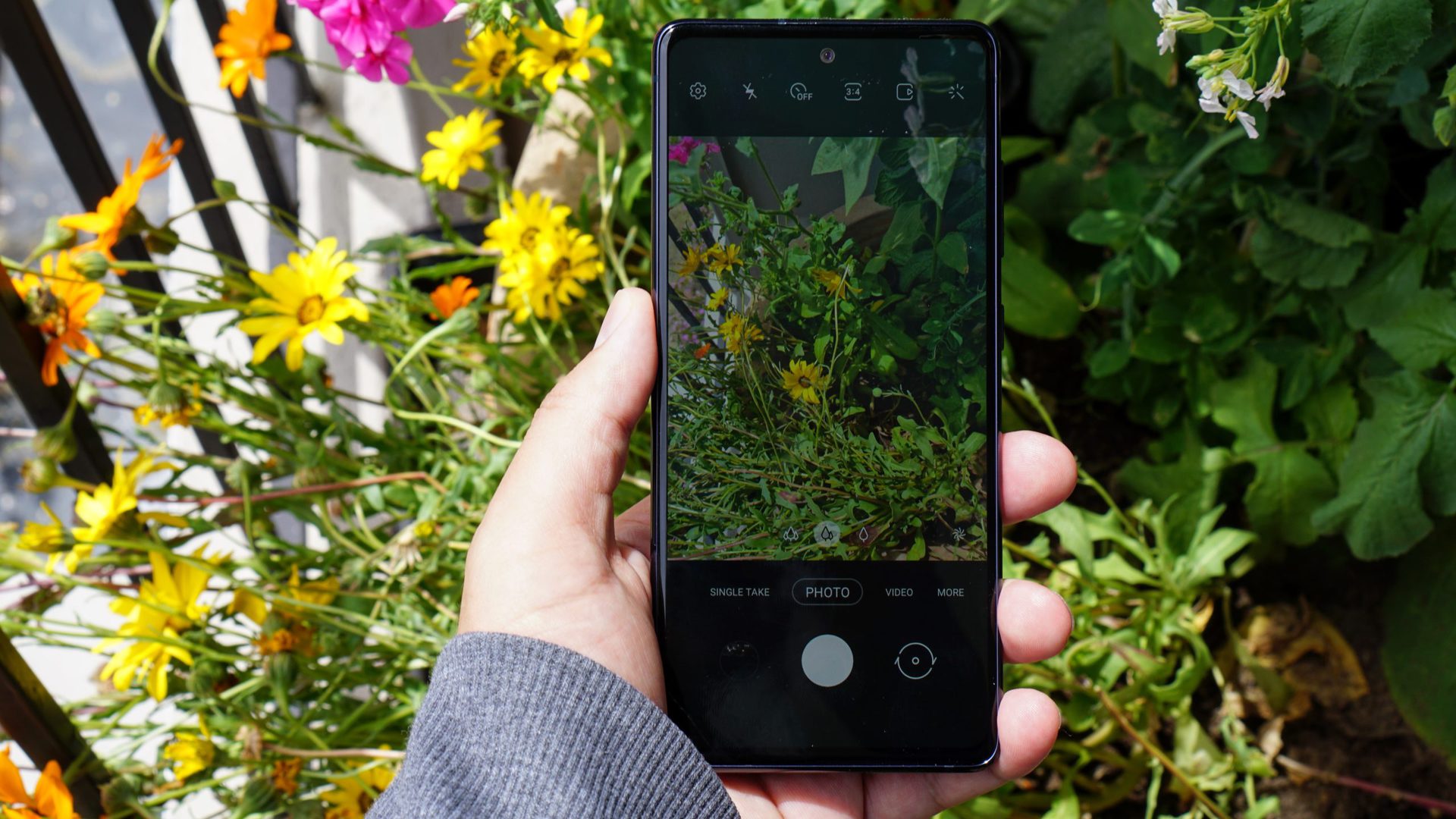
The Galaxy S20 FE delivered a pretty capable camera system back in 2020. We got a 12MP main shooter, a 12MP ultra-wide snapper, and an 8MP 3x telephoto lens. The latter in particular was a welcome addition, as the Galaxy S20 and Galaxy S20 Plus made use of hybrid zoom for their zoomed-in snaps.
Samsung’s FE model has aged pretty decently in this regard, as the camera system is still pretty flexible. Though it does lack some extras you find with some true flagships like 8K recording (due to the lack of a 33MP+ camera) and autofocus on the ultra-wide lens. The latter is the more disappointing in my book, especially when the likes of OnePlus, Apple, and others have offered it to enable macro modes. In saying so, the main camera does let you get relatively close to subjects compared to 50MP+ phones.
What about real-world usage though? The primary 12MP shooter is a reliable camera for the most part, with focus performance being consistently good compared to many of today’s flagships. Daytime snaps in general with the primary camera were usually clean and contained a healthy level of resolvable detail too.
The biggest issue I found is that images taken with the main camera can simply look way too vibrant at times, even by Samsung’s usual contrast-heavy standards. Check out the foliage in the fifth and sixth pictures. I’m not sure if it’s a case of Samsung’s default color processing cranking things up or aggressive HDR, but it’s definitely got a neon look going on along with a halo. It’s also worth noting that the foliage in these images looks a little muddy too. The halo effect also seems to extend to the image of the Lego model, suggesting that this is heavy-handed HDR.
See also: The best camera phones you can get
Need to get a little closer? That’s what the 3x 8MP telephoto camera is for. We’re glad to see this camera here, as it isn’t always guaranteed in this price bracket. Photos taken with this shooter were solid at 3x, although we see the watercolor effect and muddy textures on elements like trees when you pixel-peep. You can still get decent results at this zoom factor, but images become nigh-on unusable before 10x.
The Galaxy S20 FE's rear camera system covers all bases on paper, but image quality can be hit and miss.
The ultra-wide camera might be the worst of the bunch though, delivering a 12MP 123-degree sensor. That field of view is perfectly wide, although there’s a pretty noticeable drop in resolvable detail compared to the main shooter. A bigger issue is the sheer amount of noise and softening in the corners of these shots. It really feels like a budget proposition in this regard.
The Galaxy S20 FE does see an inevitable drop in image quality at night, with the main camera delivering noisier, softer shots. Check out the comparison between the Samsung phone and vivo X70 Pro Plus below, with the vivo phone delivering a sharper, brighter image (and capturing the more accurate warm light of the overall scene). Now, granted, the vivo device is more recent and way more expensive, but it does illustrate what a larger, more modern sensor can do.
Ultra-wide image quality plummets when the sun goes down. Shots taken with this camera at night have a ton of noise and are often way too dark to see anything. The night mode, however, does a solid job of salvaging some shots, but it still lags far behind today’s top ultra-wide cameras.
Samsung’s phone also contains a 32MP snapper upfront, and it’s not the worst selfie camera around. We could definitely do with improved facial detail in all lighting conditions, while dynamic range tends to suffer as well. But low-light selfies aren’t completely awful, thanks in part to night mode for the front shooter.
Otherwise, we’re also glad to see returning features like the nifty Single Take mode, Super Steady video recording (albeit at 1080p/30fps), pro video option, pro photo mode, hyper-lapse functionality, and more. Although the lack of Samsung’s Director’s View feature (for switching between different lenses while recording) is a little disappointing.
Room for improvement
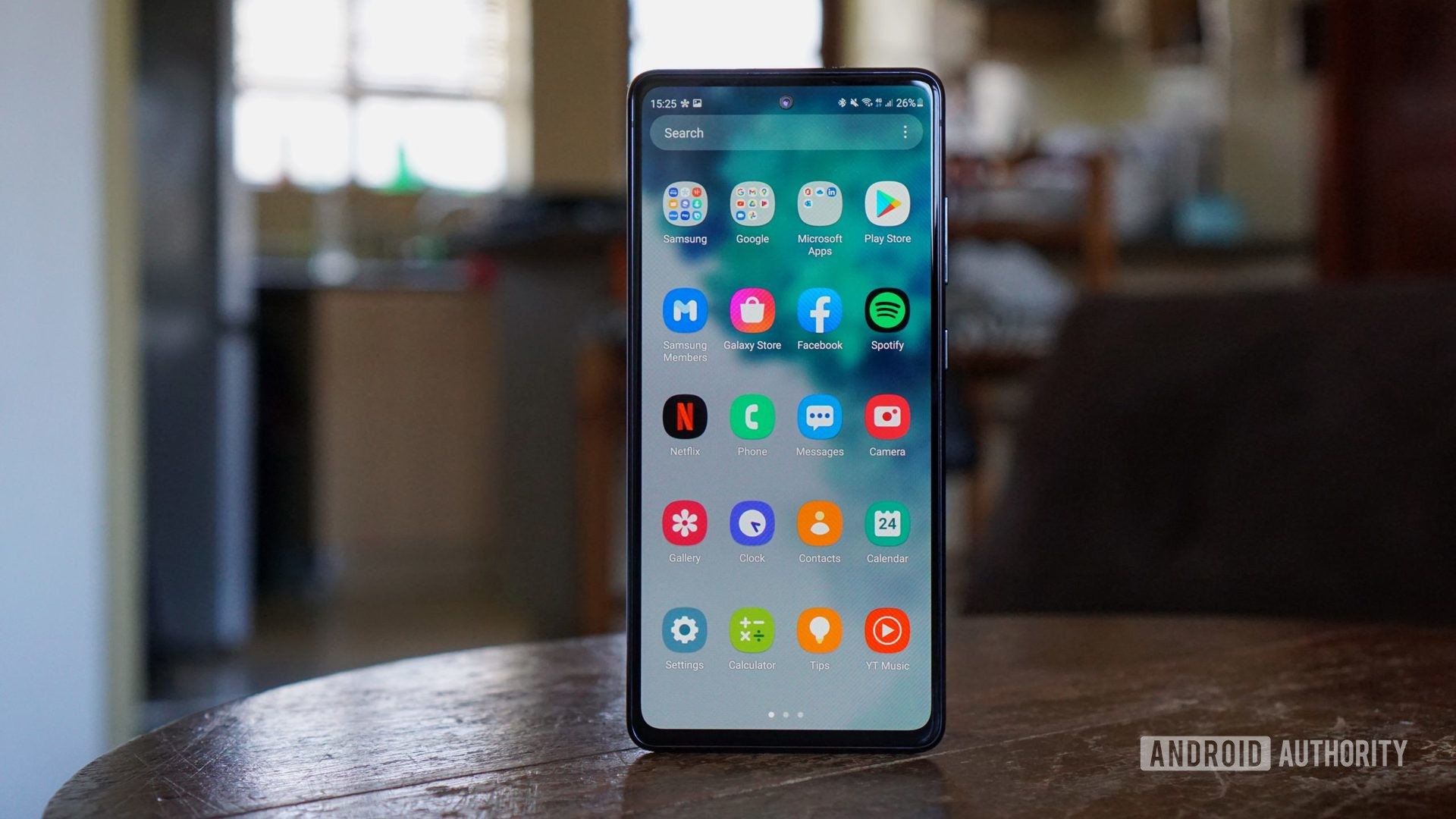
The Galaxy S20 FE definitely feels like a strong proposition one year down the line, but there are a few areas where it could be a little better.
25W charging support, but a 15W charger
One downside is that Samsung’s last FE release only ships with a 15W charger, despite supporting 25W speeds. That means you’ll need to wait roughly an hour and a half for a full charge with the in-box charger. Even some 2018-era smartphones offered much faster charging times. While you do still get a charger, it’s not exactly a perk when it can’t give you the best speeds possible.
One UI’s default settings are unintuitive
Like other Samsung phones, One UI has some perplexing default settings on the Galaxy S20 FE. Perhaps the biggest issue is Samsung’s insistence on making the power button the Bixby button (instead of, you know, giving you access to the power menu). Samsung isn’t the only company needlessly toying with the power button functionality, but it’s definitely the most high-profile offender.
It’s also a little disappointing that you still can’t set Google Discover as your left-most screen in the default launcher. It’s a Samsung Free-or-nothing approach here.
Samsung Galaxy S20 FE long-term review: The verdict
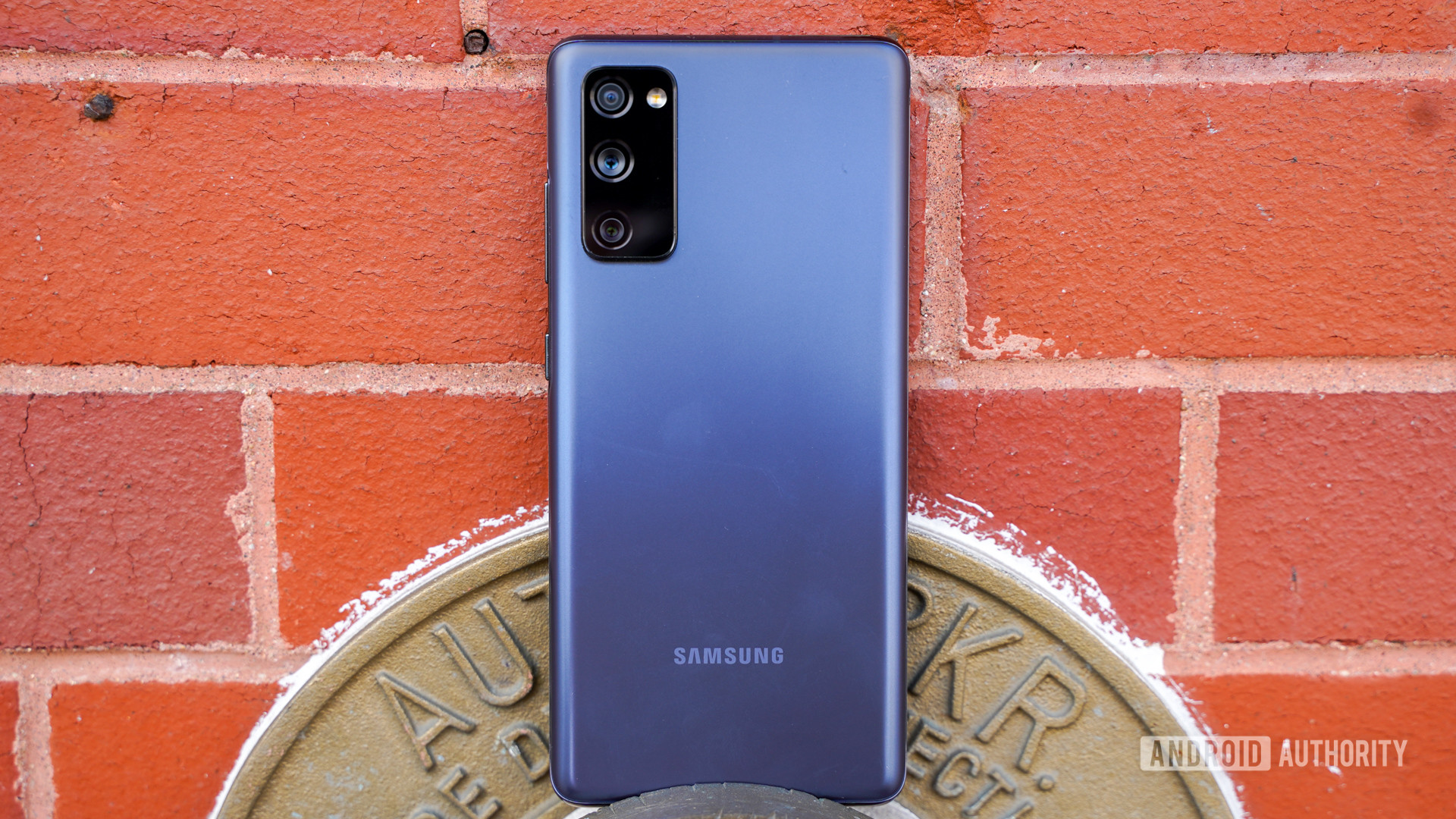
The Galaxy S20 FE is not perfect. If you stumble upon an Exynos version it’ll be a notable performance downgrade if you’re a power user. Additionally, the slow charging times are only excused by the fact that there’s a charger in the box at all. Image quality hasn’t quite kept up with 2021 flagships, either. Nevertheless, the rest of the Galaxy S20 FE has largely aged like a fine wine.
Samsung Galaxy S20 FE one year later: Is it still worth buying?
It was priced at a pretty competitive $699 at launch last year, and it saw a price drop to $600 in subsequent months. We thought the phone was a good deal at launch and a great deal following the price drop. But even now the Galaxy S20 FE is still worth a look, even with the brand-new Pixel 6 offering a similar level of bang for your buck.
A large part of the Galaxy S20 FE’s enduring success is because the Galaxy S21 FE still isn’t here yet, though. Until then, this remains Samsung’s cheapest flagship-level phone, and with features like a 120Hz OLED screen, 4,500mAh battery, flexible camera system, wireless charging, water resistance, and a lengthy update commitment, it still manages to impress when pitted against current affordable flagships.
